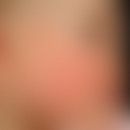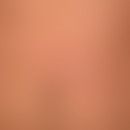Synonym(s)
HistoryThis section has been translated automatically.
Leiner, 1908: Leiner described 43 children with a disease of generalized erythroderma, diarrhea, and failure to thrive, which appeared at the end of the first or beginning of the second month of life. He named the disease "erythroderma desquamativa." Simon et al (1965) described 3 male siblings with erythroderma, severe diarrhea, and decreased resistance to infection. Death occurred at 2, 6, and 9 months of age. Postmortem findings included lymphoid hypoplasia and an increase in reticular cells in the lymph nodes.
Since then, the term "Leiner disease or erythroderma desquamativa) has been used for a heterogeneous group of disorders encompassing a spectrum of erythroderma, including atopic der matitis or seborrheic dermatitis of childhood, ichthyosiform erythroderma (242100), Netherton syndrome (256500) that are combined with immunodeficiencies (often complement deficiencies) (cf.u. Immunodeficiencies primary/complement defects). Glover et al (1988) described 2 siblings and 3 other unrelated children with various immunologic abnormalities under the diagnosis of erythrodermia desquamativa. It was later found that one of the children had Netherton syndrome and another had Omenn syndrome (603554). (Shield et al. 1992).
DefinitionThis section has been translated automatically.
Erythrodermia desquamativa, as described by Leiner in 1908, is no longer considered a distinct entity that can be clearly defined pathogenetically. Rather, it is defined as a heterogeneous group of disorders encompassing a spectrum of erythroderma (including atopic dermatitis or seborrheic dermatitis in childhood, ichthyosiform erythroderma (242100), Netherton syndrome (256500) which are combined with various immunodeficiencies (mostly complement deficiencies - C3,C5) (see below Immunodeficiencies primary (complement def iciencies) (Sanghvi SY et al. 2021) .
You might also be interested in
EtiopathogenesisThis section has been translated automatically.
Varies; discussed, among others, are disorders of the complement system, especially of C5.
ManifestationThis section has been translated automatically.
ClinicThis section has been translated automatically.
Rapid spread and confluence of skin lesions of seborrheic eczema of infants, see also Eccema infantum with greasy scaling skin redness. Frequently (> 90%) intestinal candidiasis and secondary colonization of skin folds with Candida species.
Possible general symptoms: fever, anemia, thin stools, liver enlargement, emaciation.
DiagnosisThis section has been translated automatically.
Diagnosis includes evidence of deficient opsonization activity along with the clinical tetrad of:
Erythroderma
- persistent gastrointestinal disturbances
- superimposed bacterial or mycotic (yeast) infections
- and marked emaciation.
There is an important association between LD and impaired opsonization of yeasts and Staphylococcus aureus noted.
Differential diagnosisThis section has been translated automatically.
Complication(s)(associated diseasesThis section has been translated automatically.
TherapyThis section has been translated automatically.
Symptomatic
Note(s)This section has been translated automatically.
Erythrodermia desquamativa in the form described by Leiner in 1908 is no longer regarded as an independent, pathogenetically clearly definable entity but rather as a heterogeneous pool of different erythrodermic diseases (including atopic dermatitis/seborrheic dermatitis in childhood/non-hyosiform erythroderma (242100)/Netherton syndrome (256500) which are combined with various immunodeficiencies (mostly complement deficiencies - C3,C5) (cf.u. Immunodeficiencies primary (complement defects) (Sanghvi SY et al. 2021) .
LiteratureThis section has been translated automatically.
- Kim HJ et al (2001) Generalized seborrheic dermatitis in an immunodeficient newborn. Cutis 67: 52-54
- Leiner C (1908) On erythrodermia desquamativa, a peculiar universal dermatosis of chest children. Archiv für Dermatologie und Syphilis (Berlin) 89: 65-76, 163-189.
- Leiner C (1908) Erythrodermia desquamativa (universal dermatitis of children at the breast). Br J Child Dis 5: 244-251.
- Sonea MJ et al (1987) Leiner's disease associated with diminished third component of complement. Pediatr Dermatol 4: 105-107.
Sanghvi SY et al (2021) Leiner's disease (erythroderma desquamativum): A review and approach to therapy. Dermatol Ther 34:e14510.
Incoming links (5)
Complement component 5 deficiency; Dermatitis linen; Leiner's dermatitis; Leiner's erythroderma; PID - deficiency of complement;Outgoing links (14)
Atopic dermatitis in infancy; Atopic dermatitis (overview); Autosomal recessive ichthyosis lamellosa with transglutaminase deficiency; C5 Gene; Candida; Candidoses; Candidosis, enteral; Complement component 3 deficiency, autosomal recessive; Complement system; Erythrodermia; ... Show allDisclaimer
Please ask your physician for a reliable diagnosis. This website is only meant as a reference.




